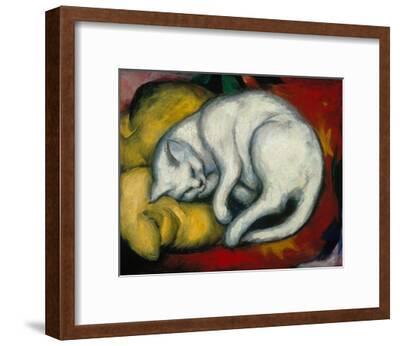

With a great feline leap, from Japan we move to France with Pierre-Auguste Renoir (1841-1919), admiring his work Child with Cat (Julie Manet). Pierre-Auguste Renoir (1841-1919), ‘Child with Cat (Julie Manet)’ (L'enfant au chat), 1887, oil on canvas, 65 x 54 cm, Musée d'Orsay. Pierre-Auguste Renoir, Child with Cat (Julie Manet) Related: The Story of the Staffordshire Dog FigurinesĨ. The animal has its hind legs resting on the ground, as if it were about to leap. The unusual print design of Hiroshige II (1826-1869), another Japanese representative of ukiyo-e art, reflects his unique approach and shows careful observation of a domestic cat, depicted in a minimal yet lively way. Hiroshige II (1826-1869), ‘A White Cat Playing with a String’, woodblock print (nishiki-e), ink and colour on paper, 1863, 21.3 × 26.7 cm, Minneapolis Institute of Arts. Hiroshige II, A White Cat Playing with a String In one of his most famous works, cats are used to depict Japanese proverbs in their different poses.ĩ. A great lover of felines, which he was surrounded by while working in his studio, Kuniyoshi began to use cats in his satirical prints as well.

His subjects included many genres, including landscapes, geishas, actors and cats. Let's start in Japan with the artist Utagawa Kuniyoshi (1797-1861), one of the last great masters of the ukiyo-e style of painting and woodcut, which still influences tattoo artists and manga artists today. 1852, nishiki-e polychrome print, 35.3 x 24.5 cm (part of a triptych), Masao Takashima Collection.

Utagawa Kuniyoshi (1797-1861), ‘Proverbs Illustrated by Cats’ (Tatoe zukushi no uchi), c. Utagawa Kuniyoshi, Proverbs Illustrated by Cats Here is a small roundup of ten paintings – made over the years by various artists and in various parts of the world – in which our beloved feline is the master.ġ0. Let's put ourselves in the shoes, or paws, of a cat and go on a discovery. It wasn’t until the Victorian period when a radical change of status saw cats portrayed in sentimental and intimate family scenes. In the Middle Ages, however, cats were considered ‘heretical’ animals, associated with the devil and witches. In ancient Egypt, the cat was considered a sacred animal and depicted in sculptures, paintings and engravings, and sometimes the deities were represented with a human body and a feline head. It’s worth mentioning that these wonderful animals have not always been portrayed in a positive manner. The oldest evidence appears to be a rock carving in Libya, dating back to 7,000 years ago and depicting a fight between cats. Mysterious, sly and elegant, cats have fascinated us since the dawn of time, and have been portrayed in the most varied ways over the millennia.


 0 kommentar(er)
0 kommentar(er)
